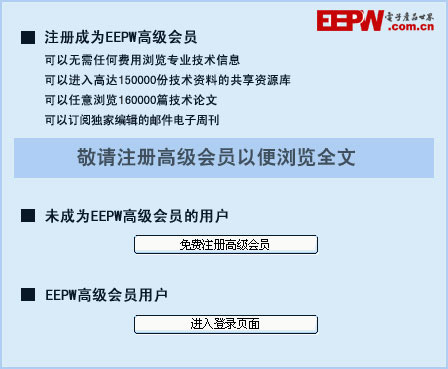基于openssl3.0,已知ECC算法x,y如何構建公鑰的EVP_PKEY結構
前言
在將項目從 OpenSSL 1.1 升級到 OpenSSL 3.0 的過程中,
開發者可能會遇到許多 API 的變化和棄用,尤其是在處理橢圓曲線(ECC)相關的函數時。
OpenSSL 3.0 引入了一些新的 API,并對原有的 EC 相關函數進行了替換或棄用。
盡管如此,我們仍然可以使用這些新 API 來創建和處理 EVP_PKEY 結構,以滿足現代加密需求。在已知ECC算法公鑰下x,y以及算法NID的前提下,如何使用openssl-3.0中的接口構建EVP_PKEY結構呢?
一、問題分析
在openssl-1.1中,我們可以很輕松創建ECC公鑰,但在openssl-3.0中很多相關的API已經被
替換或棄用,導致代碼無法使用。
二、在openssl-1.1中的解決方案
注:
1.代碼實現中的返回值定義,日志輸出函數,內存釋放函數需自行實現。
2.1使用ECC算法的NID構建EC_KEY結構
1
EC_KEY ecPublicKey = NULL;
ecPublicKey = EC_KEY_new_by_curve_name(nid);
if (NULL == (*ecPublicKey)) {
LOG_E("EC_KEY_new_by_curve_name error : %ld, %s", ERR_get_error(), ERR_reason_error_string(ERR_get_error()));
return -1;
}
2.2將公鑰的x,y轉換成大數BIGNUM
BIGNUM* bnX = NULL;
BIGNUM* bnY = NULL;
bnX = BN_bin2bn(x, 32, NULL);
if (NULL == bnX) {
LOG_E("BN_bin2bn error : %ld, %s", ERR_get_error(), ERR_reason_error_string(ERR_get_error()));
EC_KEY_free(*ecPublicKey);
*ecPublicKey = NULL;
return -1;
}
bnY = BN_bin2bn(y, 32, NULL);
if (NULL == bnY) {
LOG_E("BN_bin2bn error : %ld, %s", ERR_get_error(), ERR_reason_error_string(ERR_get_error()));
EC_KEY_free(*ecPublicKey);
*ecPublicKey = NULL;
WY_OPENSSL_FREE(BIGNUM, bnX);
return -1;
}
2.3將公鑰信息x,y大數存放在EC_KEY結構中
1
if (1 != EC_KEY_set_public_key_affine_coordinates(*ecPublicKey, bnX, bnY)) {
LOG_E("BN_bin2bn : %ld, %s", ERR_get_error(), ERR_reason_error_string(ERR_get_error()));
EC_KEY_free(*ecPublicKey);
*ecPublicKey = NULL;
WY_OPENSSL_FREE(BIGNUM, bnX);
WY_OPENSSL_FREE(BIGNUM, bnY);
return -1;
}
2.4完整代碼
1
int get_ec_public_key_from_x_y(const unsigned char *x, const unsigned char *y, int nid, EC_KEY **ecPublicKey)
{
if ((NULL == x) || (NULL == y)) {
LOG_E("param error");
return ERROR_PARAM;
}
if (NULL != (*ecPublicKey)) {
WY_OPENSSL_FREE(EC_KEY, *ecPublicKey);
*ecPublicKey = NULL;
}
*ecPublicKey = EC_KEY_new_by_curve_name(nid);
if (NULL == (*ecPublicKey)) {
LOG_E("EC_KEY_new_by_curve_name error : %ld, %s", ERR_get_error(), ERR_reason_error_string(ERR_get_error()));
return -1;
}
BIGNUM* bnX = NULL;
BIGNUM* bnY = NULL;
bnX = BN_bin2bn(x, 32, NULL);
if (NULL == bnX) {
LOG_E("BN_bin2bn error : %ld, %s", ERR_get_error(), ERR_reason_error_string(ERR_get_error()));
EC_KEY_free(*ecPublicKey);
*ecPublicKey = NULL;
return -1;
}
bnY = BN_bin2bn(y, 32, NULL);
if (NULL == bnY) {
LOG_E("BN_bin2bn error : %ld, %s", ERR_get_error(), ERR_reason_error_string(ERR_get_error()));
EC_KEY_free(*ecPublicKey);
*ecPublicKey = NULL;
WY_OPENSSL_FREE(BIGNUM, bnX);
return -1;
}
if (1 != EC_KEY_set_public_key_affine_coordinates(*ecPublicKey, bnX, bnY)) {
LOG_E("BN_bin2bn : %ld, %s", ERR_get_error(), ERR_reason_error_string(ERR_get_error()));
EC_KEY_free(*ecPublicKey);
*ecPublicKey = NULL;
WY_OPENSSL_FREE(BIGNUM, bnX);
WY_OPENSSL_FREE(BIGNUM, bnY);
return -1;
}
WY_OPENSSL_FREE(BIGNUM, bnX);
WY_OPENSSL_FREE(BIGNUM, bnY);
return 0;
}
int EC_KEY_to_EVP_PKEY(const EC_KEY *ecKey, EVP_PKEY **evpKey)
{
if (NULL == ecKey) {
LOG_E("param error");
return ERROR_PARAM;
}
if (NULL != (*evpKey)) {
EVP_PKEY_free(*evpKey);
*evpKey = NULL;
}
*evpKey = EVP_PKEY_new();
if (NULL == (*evpKey)) {
LOG_E("EVP_PKEY_new : %ld, %s", ERR_get_error(), ERR_reason_error_string(ERR_get_error()));
return ERROR_EVP_PKEY_NEW;
}
if (1 != EVP_PKEY_set1_EC_KEY(*evpKey, (EC_KEY*)ecKey)) {
LOG_E("EVP_PKEY_set1_EC_KEY : %ld, %s", ERR_get_error(), ERR_reason_error_string(ERR_get_error()));
EVP_PKEY_free(*evpKey);
*evpKey = NULL;
return -1;
}
LOG_D("ec key to evp key success");
return 0;
}
int get_evp_public_key_ecc(const unsigned char *, size_t keyLen, int nid, EVP_PKEY **evpKey)
{
if ((NULL == key) || (keyLen <= 0)) {
LOG_E("param error");
return ERROR_PARAM;
}
int ret = 0;
unsigned char tmpPublicKey[1024] = {0};
if (keyLen == 65) {
memcpy(tmpPublicKey, key + 1, keyLen -1);
} else if (keyLen == 64) {
memcpy(tmpPublicKey, key, keyLen);
} else {
return ERROR_NOT_SUPPORT;
}
unsigned char tmpX[64] = {0};
unsigned char tmpY[64] = {0};
memcpy(tmpX, tmpPublicKey, 32);
memcpy(tmpY, tmpPublicKey + 32, 32);
LOG_H((const unsigned char*)tmpX, 32);
LOG_H((const unsigned char*)tmpY, 32);
EC_KEY *ecPublicKey = NULL;
ret = get_ec_public_key_from_x_y(tmpX, tmpY, nid, &ecPublicKey);
if (0 != ret) {
LOG_E("get ec public key error");
return ret;
}
ret = EC_KEY_to_EVP_PKEY(ecPublicKey, evpKey);
if (0 != ret) {
LOG_E("ec key to evp key error");
EC_KEY_free(ecPublicKey);
ecPublicKey = NULL;
return ret;
}
EC_KEY_free(ecPublicKey);
ecPublicKey = NULL;
return ret;
}
三、在openssl-3.0中的解決方案
注:
1.代碼實現中的返回值定義,日志輸出函數,內存釋放函數需自行實現。
2.如果x,y的二進制數據中包含0x00構建EVP_PKEY結構將失敗。
/**
* @brief 通過x,y,以及算法的nid構建公鑰的EVP_PKEY結構
*
* @param x[in] ECC算法公鑰中,x的數據
* @param y[in] ECC算法公鑰中,y的數據
* @param nid[in] 當前ECC算法的NID
* @param evpPublicKey[out] 公鑰的ECVP_PKEY結構
*
* @return 0 - success, !0 - error
*/
int get_evp_pkey_from_ecc_xy(const unsigned char *x, const unsigned char *y, int nid,
EVP_PKEY **evpPublicKey)
{
// 判斷參數是否為空
if ((NULL == x) || (NULL == y) || (NULL == evpPublicKey)) {
LOG_E("param error");
return ERROR_PARAM;
}
if (NULL != (*evpPublicKey)) {
WY_OPENSSL_FREE(EVP_PKEY, *evpPublicKey);
*evpPublicKey = NULL;
}
unsigned char publicKey[512] = {0};
int tmpPublicKeyLen = 0;
char* algStr = NULL;
switch (nid)
{
case NID_X9_62_prime256v1:
algStr = "prime256v1";
break;
default:
return ERROR_NOT_SUPPORT;
break;
}
size_t xLen = strlen((const char*)x);
size_t yLen = strlen((const char*)y);
// 用于表是數據的格式,通常使用0x04表示,構建公鑰數據: 格式: 0x04 + x + y
int hea = POINT_CONVERSION_UNCOMPRESSED;
memcpy(publicKey + tmpPublicKeyLen, (unsigned char*)&hea, 1);
tmpPublicKeyLen += 1;
memcpy(publicKey + tmpPublicKeyLen, x, xLen);
tmpPublicKeyLen += xLen;
memcpy(publicKey + tmpPublicKeyLen, y, yLen);
size_t publicKeyLen = tmpPublicKeyLen + yLen;
//
OSSL_PARAM_BLD *paramsBuild = OSSL_PARAM_BLD_new();
if (NULL == paramsBuild) {
LOG_E("OSSL_PARAM_BLD_new error : %ld, %s", ERR_get_error(), ERR_reason_error_string(ERR_get_error()));
return 1;
}
// 將ECC算法名稱構建到結構體中
OSSL_PARAM_BLD_push_utf8_string(paramsBuild, OSSL_PKEY_PARAM_GROUP_NAME, algStr, 0);
// 將公鑰數據構建到結構體中
OSSL_PARAM_BLD_push_octet_string(paramsBuild, OSSL_PKEY_PARAM_PUB_KEY, publicKey, publicKeyLen);
// 將構建器中已經定義的參數轉換成可以被 OpenSSL 的其他部分使用的 OSSL_PARAM 數組
OSSL_PARAM *params = OSSL_PARAM_BLD_to_param(paramsBuild);
if (NULL == params) {
LOG_E("OSSL_PARAM_BLD_to_param error : %ld, %s", ERR_get_error(), ERR_reason_error_string(ERR_get_error()));
WY_OPENSSL_FREE(OSSL_PARAM_BLD, paramsBuild);
return 1;
}
// 根據給定的算法名稱創建一個 EVP_PKEY_CTX 上下文
EVP_PKEY_CTX* ctx = EVP_PKEY_CTX_new_from_name(NULL, "EC", NULL);
if (NULL == ctx) {
LOG_E("EVP_PKEY_CTX_new_from_name error : %ld, %s", ERR_get_error(), ERR_reason_error_string(ERR_get_error()));
WY_OPENSSL_FREE(OSSL_PARAM_BLD, paramsBuild);
return 1;
}
EVP_PKEY *tmpEvpPublicKey = NULL;
EVP_PKEY_fromdata_init(ctx);
int status = EVP_PKEY_fromdata(ctx, &tmpEvpPublicKey, EVP_PKEY_PUBLIC_KEY, params);
if (status <= 0 || tmpEvpPublicKey == NULL) {
LOG_E("status : %d", status);
LOG_E("EVP_PKEY_fromdata error : %ld, %s", ERR_get_error(), ERR_reason_error_string(ERR_get_error()));
WY_OPENSSL_FREE(OSSL_PARAM, params);
WY_OPENSSL_FREE(OSSL_PARAM_BLD, paramsBuild);
WY_OPENSSL_FREE(EVP_PKEY_CTX, ctx);
return 1;
}
*evpPublicKey = EVP_PKEY_dup(tmpEvpPublicKey);
WY_OPENSSL_FREE(EVP_PKEY, tmpEvpPublicKey);
WY_OPENSSL_FREE(OSSL_PARAM, params);
WY_OPENSSL_FREE(OSSL_PARAM_BLD, paramsBuild);
WY_OPENSSL_FREE(EVP_PKEY_CTX, ctx);
return 0;
}
————————————————
原文鏈接:https://blog.csdn.net/dream_yaya/article/details/140553623
*博客內容為網友個人發布,僅代表博主個人觀點,如有侵權請聯系工作人員刪除。



